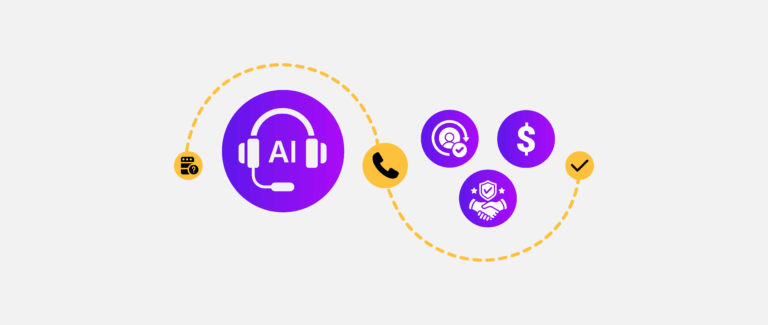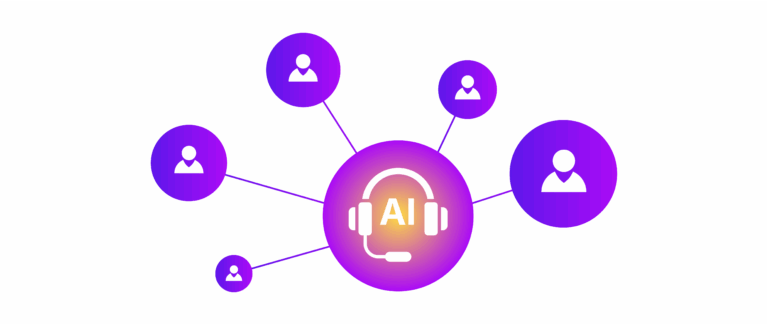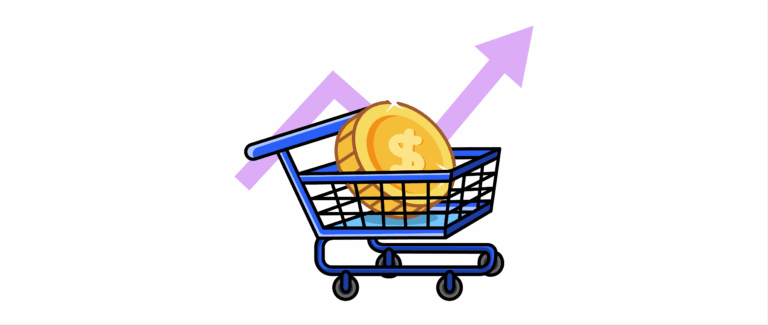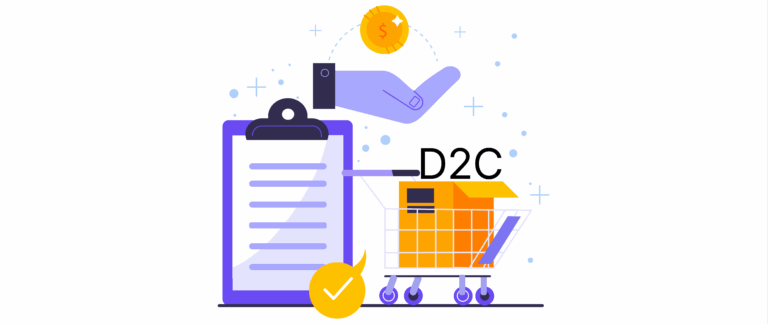In D2C, every abandoned cart is a chance to turn hesitation into a loyal customer.
Yet despite major strides in performance marketing, conversion optimization, and UI design, cart abandonment remains one of the most persistent and costly challenges digital brands face today.
Globally, the average cart abandonment rate sits at 70.19%, with mobile abandonment spiking to 85% depending on checkout complexity and page load performance.
According to McKinsey, over $4 trillion in potential e-commerce revenue is lost annually due to unpurchased items left in online carts. For D2C brands operating in an environment of escalating customer acquisition costs and shrinking retention curves, this represents a profound revenue gap and an existential risk to profitability.
Yet, many businesses continue to treat cart abandonment as inevitable.
But is it?
Most cart abandonments are preventable, because they’re not driven by a lack of purchase intent, but by friction that derails an otherwise motivated customer.
What really drives cart abandonment?
Cart abandonment is not the root problem. It is an output of a broken journey.
What causes it is often less visible. It could be micro-moments of doubt, frustration, confusion, or overwhelm that nudge a user away from completing their purchase. These are what we refer to as hidden friction points.
They are not always obvious in analytics dashboards or funnel reports. But for the end user, they’re deeply felt.
These frictions typically fall into five core categories:
- Cost Ambiguity
One of the most immediate and emotionally jarring sources of friction is pricing inconsistency. Customers form a strong initial impression or reference point to a product price early in their journey (usually on the product detail page), mentally lock onto that number, and compare all future prices to it, even if it’s not the best or most relevant price.
When that price changes suddenly at the final step due to unexpected shipping costs, taxes, or service fees, it leads to what psychologists call cognitive dissonance, which is a mismatch between expectation and reality.
Here’s a typical scenario to help you understand better:
A user adds a ₹1,299 item to their cart. At checkout, the total becomes ₹1,690. They weren’t shown estimated taxes or shipping earlier. Even though the difference might be just a few hundred rupees, the psychological impact is outsized.
Here, the user feels misled. That feeling often results in cart abandonment.
How to reduce this friction:
- Show total cost estimates earlier: Don’t wait until the final page. Provide a real-time cost preview, including shipping and taxes, as soon as the item is added to the cart.
- Use geolocation-based shipping calculators: Display estimated delivery charges based on the user’s region right on the product page.
- Highlight delivery timelines and fees upfront: Make it easy to answer: How much will this cost, and when will it arrive?
Cost transparency builds trust and when users feel informed, they’re far more likely to convert.
- Checkout Complexity
Once a user decides to buy, the ideal checkout experience should feel like a fast, seamless handoff. Unfortunately, instead of making checkout simple, some brands make it complicated, like filling out too many forms, creating an account, verifying emails, or dealing with slow or clunky interfaces.
This complexity shows up in several ways:
- Long forms asking for redundant or unnecessary information
- Mandatory account creation before allowing checkout
- Poor mobile UX, such as small tap targets, broken autofill, or improperly formatted number fields
- Lack of clear progress indicators, making users uncertain about how many steps are left
While these might seem like minor issues individually, they collectively contribute to a feeling of resistance. The customer has mentally “finished shopping,” but now has to navigate a clunky flow. That mismatch often leads to second-guessing the purchase altogether.
Moreover, on mobile, where attention spans are shorter and typing effort is higher—these frictions compound rapidly.
How to reduce this friction:
- Offer guest checkout by default: Let users complete their purchase first. You can always invite them to create an account later with a post-purchase incentive.
- Use autofill and data validation smartly: Don’t just pre-fill fields but validate them in real time to prevent frustration at the payment step.
- Minimize required fields: Only ask for what’s essential to complete the order.
- Include a clear progress bar: Show users where they are in the flow and how many steps remain.
The smoother the checkout, the lower the dropout.
- Lack of real-time support
Even with the best-designed user experience, questions will arise.
On their own, these issues might not be dealbreakers. But without quick support or clear answers, they can become reasons for people to give up on their carts and walk away without purchasing.
These kinds of questions often pop up right at the moment of purchase, and they sound like:
- “When will my order arrive?”
- “Is COD available in my city?”
- “How do I apply my coupon code?”
- “What’s your return policy?”
In these moments, most users don’t want to email support or dig through FAQs; they want an instant answer, and sometimes, a more human touch.
While live chat and tooltips go a long way, they don’t always resolve edge cases or more personal concerns. That’s where an AI-powered calling agent can help bridge the gap between the customer and the solution they are looking for.
Without requiring users to leave the checkout flow or wait on hold, these voice-based assistants can step in to answer last-minute questions, offer order-related clarification, or simply reassure hesitant buyers with real-time, conversational support.
Sometimes, all it takes is hearing a clear answer out loud to turn a maybe into a yes.
How to reduce this friction:
- Integrate live chat on high-intent pages: Especially on the cart and checkout. Make it easy to reach help without leaving the flow.
- Use contextual FAQ modals: Add mini “?” icons next to delivery dates, return policies, and coupon fields.
- Deploy exit-intent support nudges: Offer real-time help when a user moves to exit the cart page.
- Route complex queries to human agents: Let automation handle common issues, but offer escalation paths when needed.
- Enable voice-based support via AI calling agents: For users who prefer speaking to someone, AI-powered agents can offer real-time answers without interrupting the checkout process, helping resolve last-minute doubts and recover at-risk sales.
More than just a service, support is a part of the conversion experience.
- Trust gaps and psychological resistance
In a digital-first world, trust has become the most important currency in e-commerce.
If your site doesn’t feel secure, credible, or reassuring, even highly motivated users will hesitate, especially if they’re first-time buyers.
This category of friction is more than just a technical issue. It touches on emotional and psychological triggers that directly impact buying behavior.
Some common sources include:
- Unfamiliar payment gateways or poor SSL implementation
- Missing trust signals, such as padlocks, badges, or “secure checkout” copy
- No visible refund or return policy, leaving customers unsure of post-purchase support
- Lack of reviews or social proof, especially on high-intent pages
- Outdated UI design, which makes the brand feel unprofessional or unreliable
But it goes even deeper.
Sometimes, friction doesn’t come from obvious issues. It can also come from subtle things we don’t even realize, such as:
- Fear of regret: What if I buy this and it’s not what I expected?
- Decision fatigue: Too many options, unclear differences. I’ll think about it later.
- Analysis paralysis: I’m not sure if this is the best deal. Let me wait.
These emotions rarely show up in analytics, but they are deeply powerful.
How to reduce this friction:
- Use visual trust signals: Display SSL badges, secure payment options, and verification logos prominently.
- Clarify policies upfront: Place return and refund links near the “Buy Now” button, not buried in the footer.
- Integrate reviews and testimonials: Include them not just on the product page, but throughout the funnel (e.g., near the checkout button).
- Simplify decision-making: Highlight bestsellers, include comparison guides, and reduce visual clutter to avoid overwhelming users.
Always know that trust isn’t built in one section of your site, but it’s built throughout the entire user journey.
- Technical friction and performance gaps
Even when everything else is right, be it product, price, or trust, technical performance can destroy conversions.
The most damaging frictions often happen at a code level and often stay hidden until someone actually tests the experience on real devices.
These include:
- Slow page loads, especially during cart to checkout transitions
- Payment gateway timeouts or address validation errors
- Site crashes or unresponsiveness on certain browsers or devices
- Broken functionality on mobile, like un-clickable buttons or blocked keyboards
These bugs often escape internal testing but cause significant damage in the wild, especially when they interrupt the payment process.
And once trust is lost due to a technical failure, users rarely return.
How to reduce this friction:
- Run performance audits regularly: Use tools like Google Lighthouse, GTmetrix, and PageSpeed Insights to flag slow-loading pages.
- Test across devices and browsers: Use real-user monitoring tools (e.g., BrowserStack, Sentry) to surface edge-case bugs.
- Prioritize mobile responsiveness: Not just design, but functionality. Can users tap, scroll, type, and submit effortlessly on small screens?
- Implement real-time error tracking: Catch and fix broken checkout flows quickly to prevent silent drop-offs.
Closing the loop
Cart abandonment is an experience failure. And every unresolved point of friction represents lost revenue, wasted acquisition spend, and erosion of brand equity.
D2C brands treat abandonment not as a given, but as a fixable breakdown in the system.
By diagnosing hidden friction across cost transparency, process simplicity, trust-building, performance, and support, brands can reclaim lost conversions and unlock new growth. Even modest improvements, such as reducing abandonment by just 10%, can translate into double-digit revenue gains.
The question is… how many conversions are you leaving on the table simply because no one asked the customer why they walked away?





